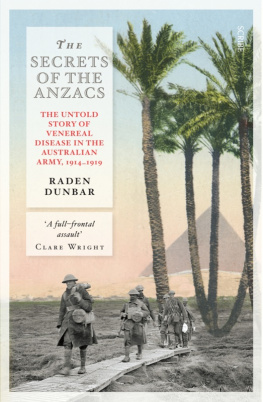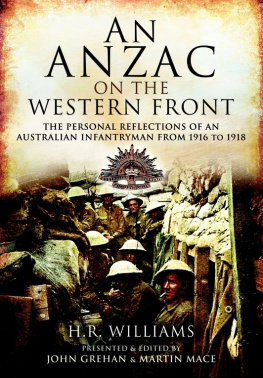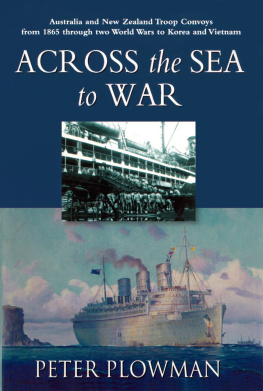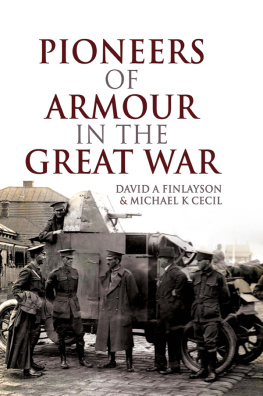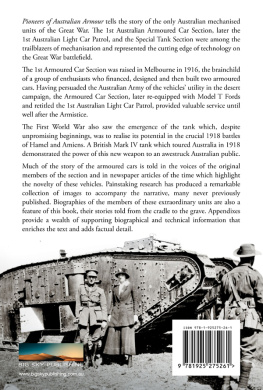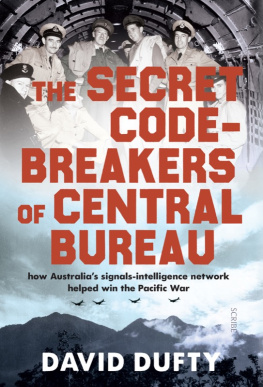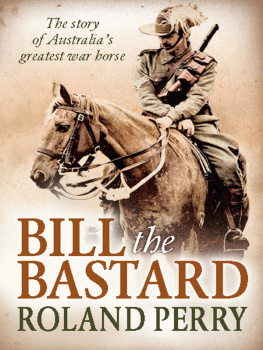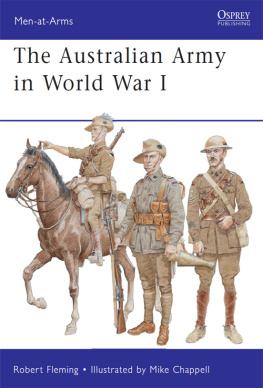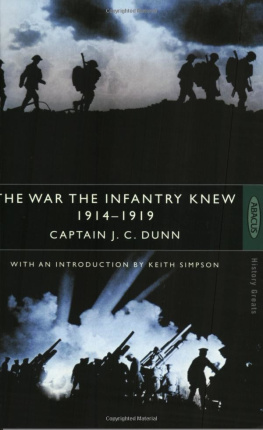
Scribe Publications
THE SECRETS OF THE ANZACS
Raden Dunbar is a retired educator who has been a schoolteacher and principal, university lecturer, and a consultant in Australia, Indonesia, and other countries. He holds postgraduate qualifications awarded by universities in Sydney and Melbourne. The Secrets of the Anzacs is his second book; his first, The Kavieng Massacre: a war crime revealed, was published in 2007. He and his wife, the Sundanese entertainer Euis Cahya, live in the city of Bandung in West Java, Indonesia.
For Maurice Buckley, Albert Crozier, Ernest Dunbar, Harold Glading, and Richard Waltham
Scribe Publications
1820 Edward St, Brunswick, Victoria 3056, Australia
2 John St, Clerkenwell, London, WC1N 2ES, United Kingdom
First published by Scribe 2014
Copyright Raden Dunbar 2014
All rights reserved. Without limiting the rights under copyright reserved above, no part of this publication may be reproduced, stored in or introduced into a retrieval system, or transmitted, in any form or by any means (electronic, mechanical, photocopying, recording or otherwise) without the prior written permission of the publishers of this book.
National Library of Australia
Cataloguing-in-Publication data
Dunbar, Raden, author.
The Secrets of the Anzacs: the untold story of venereal disease in the Australian Army, 19141919 / Raden Dunbar.
9781925106169 (AUS edition)
9781925228007 (UK edition)
9781925113402 (e-book)
1. AustraliaArmy. 2. Australian and New Zealand Army CorpsHistory. 3. World War, 1914-1918Health aspectsAustralia. 4. Sexually transmitted diseases. 5. WarHealth aspects.
616.951
scribepublications.com.au
scribepublications.co.uk
CONTENTS
Prologue: a military, medical, and moral problem
PART I
Chapter 1: sodden with drink or rotten from women
Chapter 2: the isolation-detention barracks at Abbassia
Chapter 3: la nef des fous
Chapter 4: the isolation-detention barracks at Langwarrin
PART II
Chapter 5: O, what a tangled web we weave, when first we practise to deceive!
Chapter 6: the great Sergeant Buckley, VC, DCM
Chapter 7: the secrets of the dead
Chapter 8: just a silly streak he was young at the time
PART III
Chapter 9: Australia receives a shock
Chapter 10: a triumph of science and sympathy over righteousness
Appendixes
A
B
PREFACE AND ACKNOWLEDGEMENTS
During World War I, millions of soldiers and women from all combatant nations became infected with venereal diseases during an unprecedented outbreak of wartime sexual promiscuity. Included were at least 60,000 Australian soldiers, who were treated by army doctors for venereal infections between 1914 and 1919 in Egypt, the United Kingdom, and France, and in Australia.
This is a subject that, although rarely described by historians, is so big that a single book like this one could never adequately cover it. It has numerous aspects, and there are voluminous Australian and overseas original archival and other resources about it. These include thousands of individual service and military records, and hundreds of documents, newspaper, and journal articles, and some books from the time. Although the VD infections of so many soldiers was an important part of Australias war experience, and, although during the war and immediately after, there was considerable public discussion about it, the subject seems to have later become almost unmentionable, even by historians.
This book tells the stories of a number of individuals in the Australian Imperial Force whose lives were affected by the outbreak of VD that began in Cairo in 1914. Some of these men were the senior army commanders who had to deal with the problem using policies that were progressively adjusted until 1919. Others were Australian Army Medical Corps officers in Egypt, Australia, and England who had to devise the medical methods to try to prevent and to cure the diseases. Included are stories about the army venereal-disease isolation barracks at Abbassia in Cairo and at Langwarrin near Melbourne, and about the troopship voyages carrying infected men from Abbassia to Langwarrin. In particular, this book tells the stories of five young soldiers who became infected in Egypt in 1915, were returned to Australia in disgrace on the troopship A18 Wiltshire , and had to deal with the consequences for the rest of their lives.
My interest in the fates of these soldiers began with the knowledge that my great-uncle Ernest Dunbar had an unusual record of service in the First World War. Soon, I began to look in more detail at the Wiltshire s voyage and her young passengers. Reading through hundreds of century-old AIF service files, it became obvious that, for each soldier, a few moments of sexual gratification had led to a series of personal disasters. Documents and letters revealed the harsh lessons in life that had begun after each prodigals VD infection was discovered in Egypt, and how long those lessons had gone on for.
Although my research led me in many directions, this single book, however, cannot provide all the stories of such a big topic as venereal disease in the Australian army during the war. For example, the plight, circumstances, and fates of women and girls trafficked into the brothels of Egypt and elsewhere could not be included. Also not included is detailed analysis of why wartime promiscuity on such a large scale occurred, what the Allied powers did to try to control it, or why so many Australians became infected with VD.
Although the wonderful story of the New Zealand wartime safe-sex campaigner Ettie Rout is mentioned briefly, far more space is given to her Australian collaborator James Barrett. Routs story has already been told in a book by her compatriot Jane Tolerton.
Nor could the full story of the 1st Australian Dermatological Hospital at Bulford in England be included, although it is frequently mentioned. Bulford was the largest Australian VD hospital during the war, and is a story in itself. This book mentions many ordinary soldiers who were admitted to Bulford between 1916 and 1919, including decorated war heroes, but space precluded accounts of the commissioned officers who were treated there and at other hospitals, or their unusual circumstances.
Other important topics that could not be included are the general post-war consequences of wartime VD for soldiers who were infected overseas and eventually repatriated, purportedly cured; and the consequences for their wives, their families, and Australian society during the decades after the war. In the space available, it was not possible to fully explain why wartime VD became such a sensitive post-war topic readers can draw their own conclusions about that. Finally, although speculation is included about the long-term health consequences for soldiers treated during the war with toxic anti-VD drugs containing heavy metals, this subject could not be given the thorough attention it deserves.
I would like to acknowledge and thank a number of individuals who assisted me in researching and writing this book. In particular, I acknowledge assistance given at the very beginning by Dr Milton Lewis, a medical historian at the University of Sydney. He introduced me to the historian Brendan OKeefe, who, among other accomplishments, has written extensively about venereal disease in the Australian army. Brendan conducted considerable archival research on my behalf, which provided the basis for much in the book.
Robin Brown was the first reader of early drafts, and provided considerable advice about the language I should use in writing the stories. I would also like to thank Professor Peter Stanley of the University of NSW, at the Australian Defence Force Academy in Canberra, for his encouragement and help. Among many others consulted, a number of individuals formed a readers panel to go through the first full draft manuscript and provide comment and criticism. Some are former or still-serving officers of the Australian Defence Force; others, colleagues of mine in the Australian Civilian Corps. They are Phil Bennett, Kerry Clifford, Bob Kyle, Alan Moore, John Peachey, Beth Pearce, and Dr Mark Weston Wall. Very early in the project, I was able to explain my intentions to Australian expatriates of the Capricorn Society in Jakarta, and from them received encouragement and advice.
Next page
